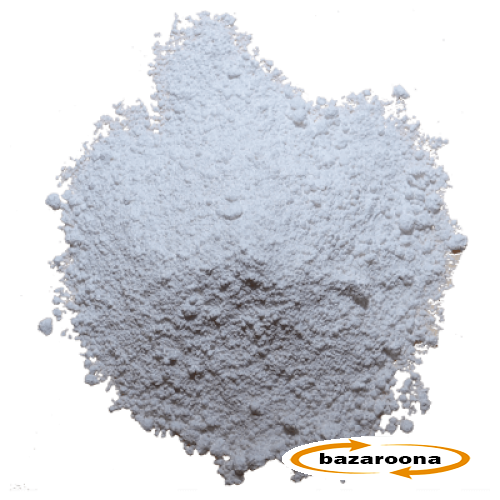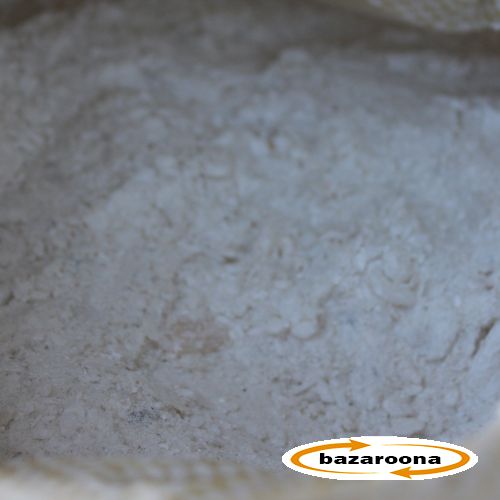
Al Hashemi Dinarkhil Stone Powder Production Company
> 24 Hrs
100%
Description
Calcium carbonate, or CaCO3, comprises more than 4% of the earth’s crust and is found throughout the world. Calcium carbonate is one of the most useful and versatile materials known to man.
Calcium carbonate, as it is used for industrial purposes, is extracted by mining or quarrying. Pure calcium carbonate can be produced from marble, or it can be prepared by passing carbon dioxide into a solution of calcium hydroxide. In the later case calcium carbonate is derived from the mixture, forming a grade of product called "precipitated calcium carbonate,” or PCC. PCC has a very fine and controlled particle size, on the order of 2 microns in diameter, particularly useful in production of paper. The other primary type of industrial product is "ground calcium carbonate,” or GCC.
GCC, as the name implies, involves crushing and processing limestone to create a powdery-like form graded by size and other properties for many different industrial and pharmaceutical applications.
Paper, Plastics, Paints, and Coatings: Calcium carbonate is the most widely used mineral in the paper, plastics, paints and coatings industries both as a filler – and due to its special white color - as a coating pigment. In the paper industry it is valued worldwide for its high brightness and light scattering characteristics, and is used as an inexpensive filler to make bright opaque paper.
Building Materials and Construction: Calcium carbonate is critical to the construction industry, both as a building material in its own right (e.g. marble), and as an ingredient of cement. It contributes to the making of mortar used in bonding bricks, concrete blocks, stones, roofing shingles, rubber compounds, and tiles. Calcium carbonate decomposes to form carbon dioxide and lime, an important material in making steel, glass, and paper.
Specifications
| Chemical formula: | CaCO3 |
|---|---|
| Appearance: | Fine white powder; chalky taste |
| Odor: | Odorless |
| Melting point: | 1,339 °C (2,442 °F; 1,612 K) (calcite) 825 °C (1,517 °F; 1,098 K) (aragonite)[4][5] |
| Solubility in water: | 0.013 g/L (25 °C)[1][2] |
| Solubility product (Ksp): | 3.3×10−9[3] |
| Place of origin: | Afghanistan |
Seller Profile
Company Information

Production of powdered calcium carbonate
Rating & Reviews
Offer to Buyer
Calcium carbonate, or CaCO3, comprises more than 4% of the earth’s crust and is found throughout the world. Calcium carbonate is one of the most useful and versatile materials known to man.
Calcium carbonate, as it is used for industrial purposes, is extracted by mining or quarrying. Pure calcium carbonate can be produced from marble, or it can be prepared by passing carbon dioxide into a solution of calcium hydroxide. In the later case calcium carbonate is derived from the mixture, forming a grade of product called "precipitated calcium carbonate,” or PCC. PCC has a very fine and controlled particle size, on the order of 2 microns in diameter, particularly useful in production of paper. The other primary type of industrial product is "ground calcium carbonate,” or GCC.
GCC, as the name implies, involves crushing and processing limestone to create a powdery-like form graded by size and other properties for many different industrial and pharmaceutical applications.
Paper, Plastics, Paints, and Coatings: Calcium carbonate is the most widely used mineral in the paper, plastics, paints and coatings industries both as a filler – and due to its special white color - as a coating pigment. In the paper industry it is valued worldwide for its high brightness and light scattering characteristics, and is used as an inexpensive filler to make bright opaque paper.
Building Materials and Construction: Calcium carbonate is critical to the construction industry, both as a building material in its own right (e.g. marble), and as an ingredient of cement. It contributes to the making of mortar used in bonding bricks, concrete blocks, stones, roofing shingles, rubber compounds, and tiles. Calcium carbonate decomposes to form carbon dioxide and lime, an important material in making steel, glass, and paper.







